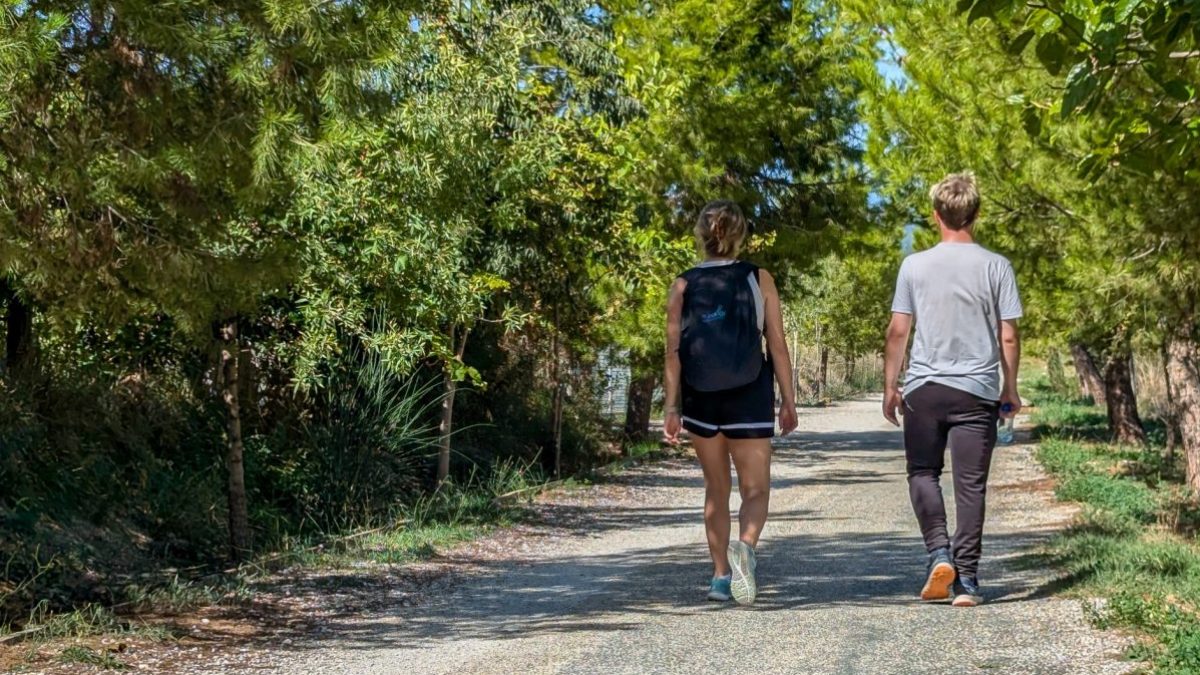With almost half a million pilgrims walking the Camino de Santiago, this shorter, overlooked trail is ideal for the Camino-curious
Most British holidaymakers flock to Spain’s coastline. In Murcia, south-eastern Spain, only around 4,500 ventured inland last year, compared to the 37,500 who came to lounge on the Costa Calida. “But for me it’s perfect,” countered José, a local adventurist keen to promote the region’s hinterland. “It’s the perfect place for connecting with yourself.”
We were setting off to explore the Camino de Levante, a pilgrimage from Orihuela in neighbouring Valencia to the holy city of Caravaca de la Cruz in Murcia, home to one of the splinters of the cross on which Jesus was crucified.
Murcia is embroidered with historic hidden gems such as Caravaca de la Cruz that bask under 300 days of sunshine each year. And it hasn’t yet seen the anti-tourism protests of neighbouring Valencia and Alicante. “We are small, we are beautiful, and you are welcome,” reassured Maria of the regional tourist board.
Known as the “orchard of Europe”, Murcia has a unique gastronomy connecting place and plate – Calasparra rice, used in paella, is cultivated in paddy fields while fish is drawn fresh from the Mar Menor. Dishes such as mojete and pastel de carne are best sampled in historic towns and give pilgrims a unique taste of the region.
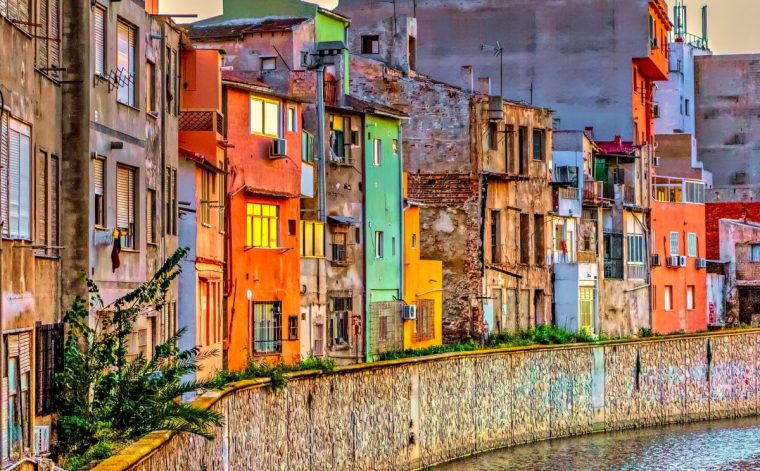 Colorful homes in Orihuela, next to the Segura river (Photo: Lux Blue/Getty/iStockphoto)
Colorful homes in Orihuela, next to the Segura river (Photo: Lux Blue/Getty/iStockphoto)
Historically, Spain’s pilgrim trails were its cultural lifeblood, overseen by chivalrous orders of knights with prized holy relics. These days, pilgrimage is in renaissance, but the Camino de Santiago – which I have walked, alongside Japan’s Kumano Kodo, making me a “dual pilgrim” – is not immune to Spain’s wider problems with overtourism. Close to half a million pilgrims walked the trail last year.
The five-stage Camino de Levante – also known as the Camino de la Cruz de Caravaca – offers an oven-ready, quieter and beguiling alternative for the Camino-curious. It winds between Orihuela and Caravaca, via the arid badlands and Europe’s Garden of Eden.
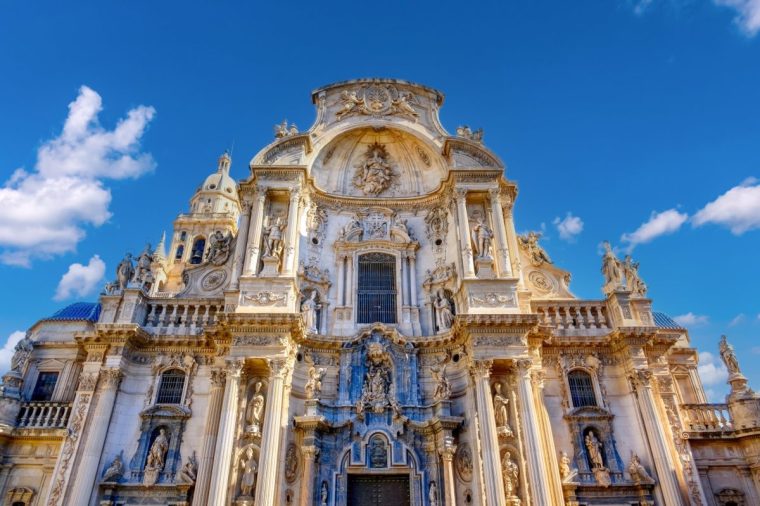 The impressive facade of Murcia’s cathedral (Photo: Roberto Machado Noa/Getty Images)
The impressive facade of Murcia’s cathedral (Photo: Roberto Machado Noa/Getty Images)
Caravaca is one of only five cities in the world that hosts a Holy Jubilee every seven years, alongside Rome, Jerusalem and Santiago de Compostela, most recently in 2024. Murcia experienced a tourism boom last year due to an increase in pilgrims, with Caravaca welcoming almost three-quarters of a million visitors.
However, this year is likely to be quieter. Off season, this Camino’s un-daunting, time-efficient 73 miles is traversable on foot in five days with pitstops, on smooth, shaded and signposted paths. There is no race to the albergue (pilgrim hostel), the route is festooned with charming (and affordable) boutique hotels and home stays.
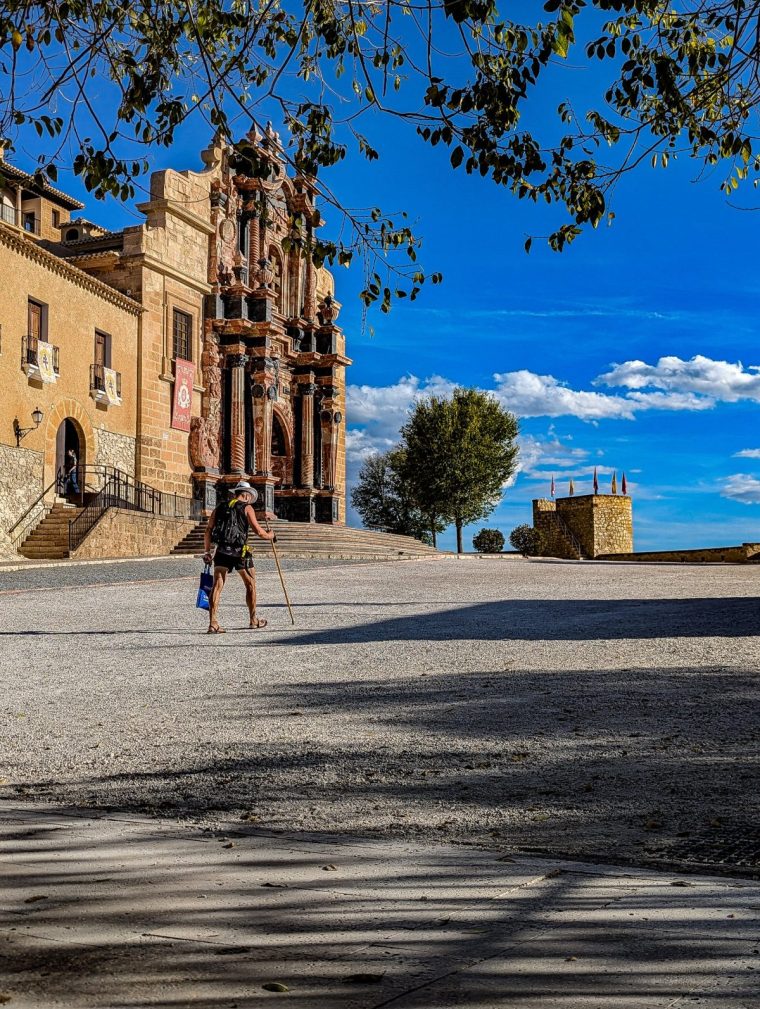 A pilgrim arrives at the Sanctuary in Caravaca (Photo: Ben Eley)
A pilgrim arrives at the Sanctuary in Caravaca (Photo: Ben Eley)
We started in Orihuela, heading out along the banks of the Rio Segura towards the city of Murcia, a stage of 15 miles that takes around half a day to walk. It was a pleasure to arrive in a city of rambling lanes and squares that throng not with tourist tat but the hubbub of Murciano chatter, boutiques and restaurant-cafes.
The stratified walls of the old town peel in layers of Roman, Islamic and Christian history. Its Cathedral has a baroque facade that speaks of the hinterland once irrigated to the tune of its bells. Nearby stands the Royal Casino, a confection of neo-revivalist styles from Arabesque to the English Baroque of its Salon de Te where you can pause for an elegant €20 three-course lunch.
Continuing along the trail, groves of bitter orange and ombu trees provide shade under which we replenish on refreshing tinto de verano.
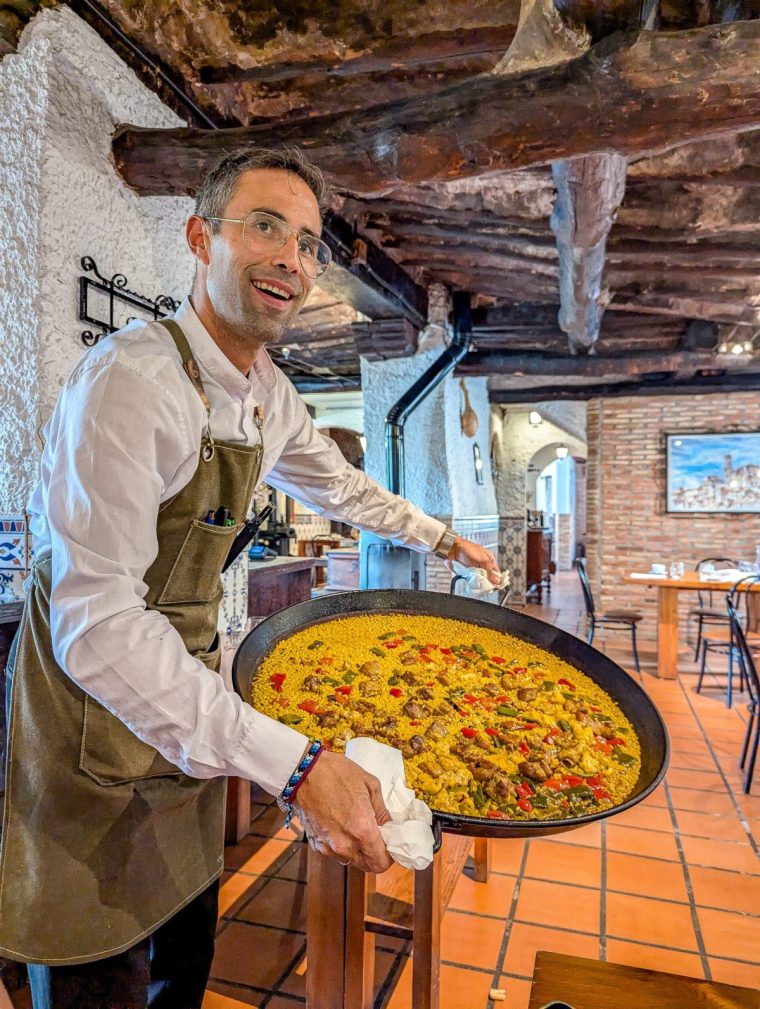 Paella is made with local bomba rice (Photo: Ben Eley)
Paella is made with local bomba rice (Photo: Ben Eley)
The route dives into Murcia’s orbital “kitchen garden” which produces much of Europe’s fresh produce, fed by ancient Islamic irrigation channels. We push on to the Barrancos de Gebas, “the badlands” – a stark landscape of Biscotti-like colours and textures. A natural laboratory for desertification, its pre-historic ravines, gullies and limestone plateaus provide us with a moment of introspection.
Beyond the valley of Mula, where olives have been cultivated since Roman times, a subtle upland ascent brings a gentle breeze as we pass a cornucopia of apricot, lemon, pomegranate and peach trees. The landscape flows like the clay roofs of the solitary farmsteads.
Bullas is one of Murcia’s three designation of origin wine-producing areas, home to the native Queen of Murcia, the versatile Monastrell grape that produces characterful reds and rosé with notes of sweet jam, from the baking hot sun. Its climate-resilient vines are vital in a region that received a third of average rainfall in 2023.
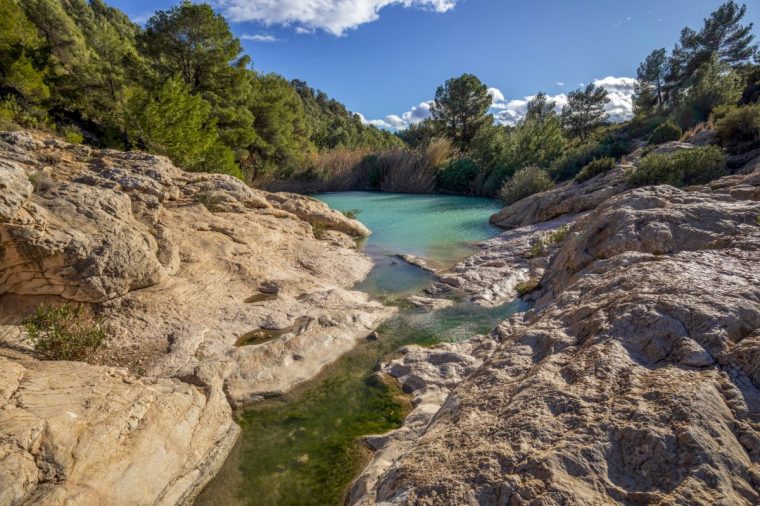 The source of the Fuente Caputa near the town of Mula (Photo: Antonio Lopez Velasco/ Getty/ iStockphoto)
The source of the Fuente Caputa near the town of Mula (Photo: Antonio Lopez Velasco/ Getty/ iStockphoto)
We pass aqueducts spanning ramblas (dry river valleys), the stillness broken by swooping falcons. We stop to take in Bejastri, an ancient settlement whose patchwork stones represent Visigoths, Romans, Arabs and Christians.
Cehegin – one of the finest towns in Murcia – was the penultimate pitstop. The scent of jasmine hangs on the breeze of its meandering streets, shaded by the faded facades of Renaissance aristocratic grandeur, with their Juliet balconies. Here, pilgrims can enjoy a last supper at El Casino Felymar, a decoratively tiled restaurant that won an award for the region’s best tapas last year.
The final stage into Caravaca is back-dropped by its crowning Sanctuary, burrowed into the Sierra del Buitre mountains. At the start of May, Caravaca’s streets host the Unesco-listed fiesta, Running of the Wine Horses. Horses are adorned with richly decorative tapestries of local life and are raced up the town’s winding terraces to the hilltop sanctuary.
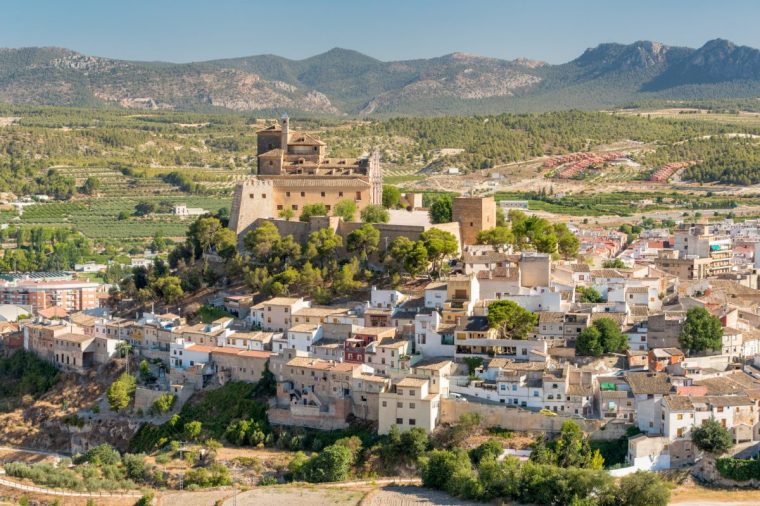 Caravaca de la Cruz is the finish point of the pilgrimage (Photo: Chris Hepburn/Getty Images)
Caravaca de la Cruz is the finish point of the pilgrimage (Photo: Chris Hepburn/Getty Images)
We received our pilgrimage certificate, then entered the holy precinct of the True Cross, resplendent in a reliquary of gold and silver that we’re told descended from the heavens, the gift of angels. “What do you like more, the history or the legend?”, asked Inma, our guide. I felt a place oozing with time-honoured tradition and an authentic passion. I was convinced.
Getting there
Ryanair and easyJet fly to Murcia from several UK airports.
More information
